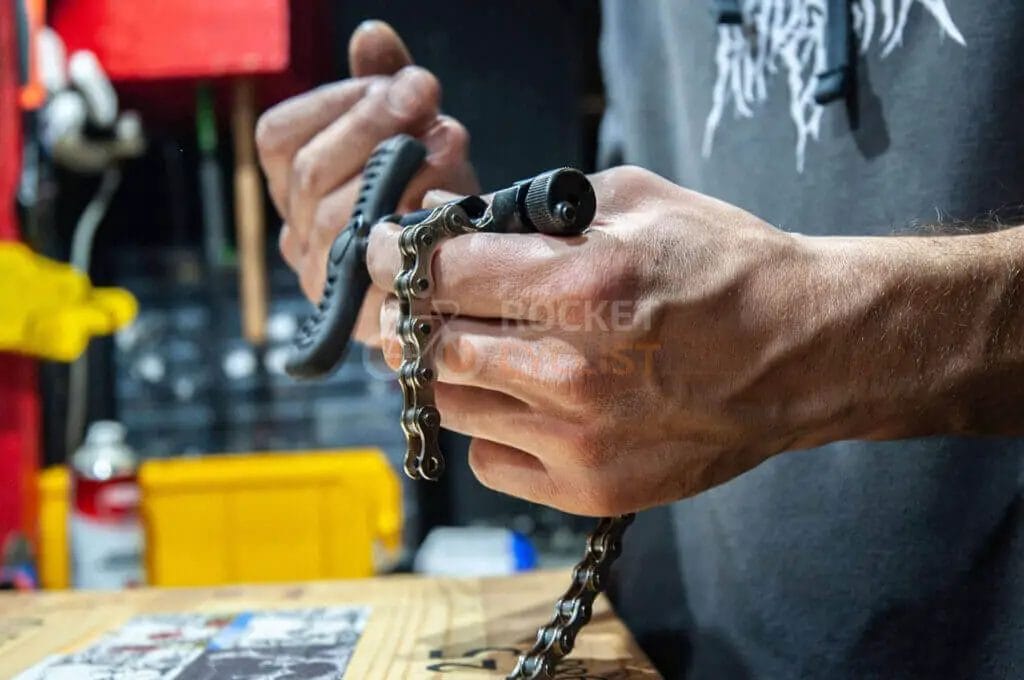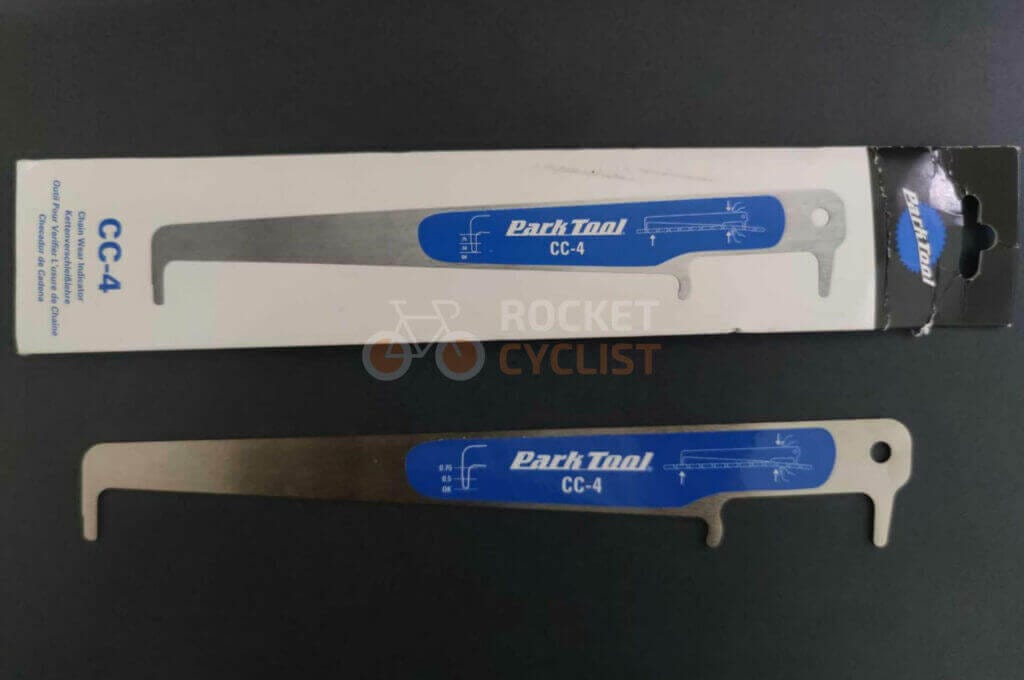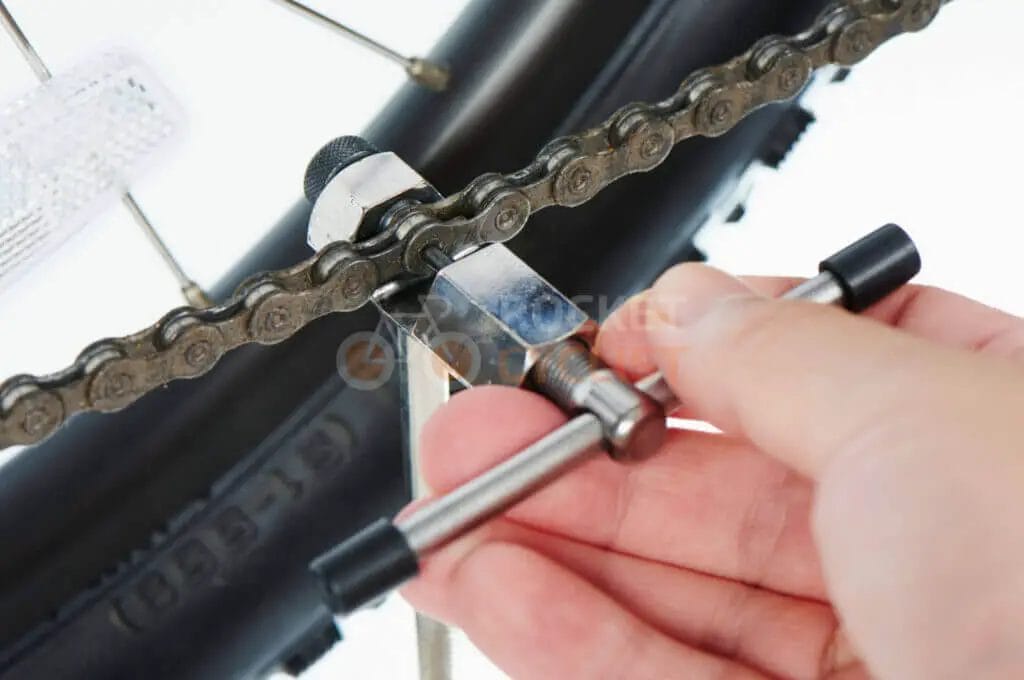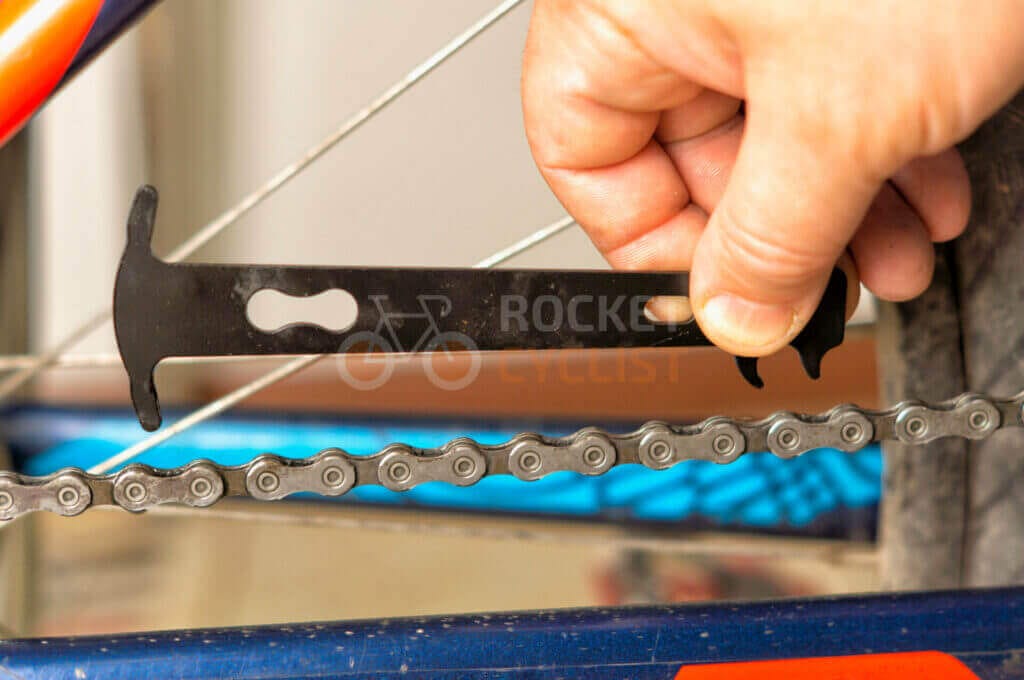Last Updated on March 24, 2024 by Vinson Lozano

When it comes to bike maintenance, one important aspect to consider is the length of your bike chain. Having a properly sized chain is crucial for optimal performance and safety. But how do you know if your bike chain is too long? In this blog post, we will explore the importance of a properly sized bike chain and discuss the signs that indicate your chain may be too long.
Importance of a properly sized bike chain
Having a properly sized bike chain is essential for a smooth and efficient cycling experience. If your chain is too long, it can lead to a host of problems. Firstly, it can cause unnecessary wear and tear on your drivetrain components, leading to premature damage and decreased performance. Moreover, a chain that is too long may not engage properly with the gears, resulting in poor shifting and a less responsive ride. Riding with a chain that is too long can also increase the risk of chain slippage or derailment, which can be dangerous, especially at high speeds or on uneven terrain.
Signs of a chain that is too long

There are several signs that can indicate your bike chain is too long. One of the most obvious signs is excessive chain slack. When your bike is in the highest gear, if you notice that the bottom part of the chain is sagging or hanging loosely, it is a clear indication that your chain is too long. Another sign to look out for is difficulty shifting gears smoothly. If you find yourself having trouble transitioning between gears or experiencing a slippage sensation, it could be due to an improperly sized chain.
In addition, a chain that is too long may produce a loud clanking or rattling noise while riding. This noise is often caused by the chain hitting against the bike frame or other components. Lastly, visually inspecting the chain can also help determine if it is too long. Compare the taughtness of the chain with recommended guidelines or consult a professional if you are unsure.
In conclusion, having a properly sized bike chain is crucial for optimal performance and safety. If you notice signs of a chain that is too long, it is important to address the issue promptly. Adjusting the chain length or seeking professional help can help ensure a smooth and enjoyable riding experience.
Measuring Your Bike Chain
Now that you understand the importance of having a properly sized bike chain, you might be wondering, “How do I know if my bike chain is too long?” Don’t worry, we’ve got you covered. In this blog post, we will explore different techniques for measuring your bike chain to ensure it is the correct length for optimal performance and safety.
Using a ruler or tape measure
One of the simplest ways to measure your bike chain is by using a ruler or tape measure. Start by shifting your bike into the smallest front chainring and the smallest rear cog. Find the spot where the chain meets and align it with the zero mark on your ruler or tape measure. Then, slowly pull the chain taut and measure the length from the zero mark to the spot where the chain meets again. This measurement will give you an idea of your chain length.
Using a chain checker tool

Another technique for measuring your bike chain is by using a chain checker tool. These tools are specifically designed to gauge the wear and stretch of your chain. Simply insert the tool into the chain and check the reading. If the tool indicates that your chain is stretched beyond its recommended limit, it may be too long and in need of replacement.
By utilizing these techniques for measuring your bike chain, you can ensure that it is the correct length. Remember, a properly sized chain is crucial for optimal performance and safety. If you discover that your chain is too long, it is important to address the issue promptly. You can adjust the chain length yourself or seek assistance from a professional bike mechanic. Don’t compromise on the quality of your ride – keep your bike chain properly measured and enjoy a smooth and enjoyable cycling experience.
The Effects of a Long Chain
Having a properly sized bike chain is crucial for optimal performance and safety. If your bike chain is too long, it can lead to a variety of issues that can affect your riding experience. Here are some of the potential effects of a long chain:
Excessive chain slack and potential issues
When your bike chain is too long, it can result in excessive chain slack. This means that there is too much slack between the chainrings and the rear cassette. Excessive chain slack can cause the chain to bounce and slap against the frame, leading to increased noise and vibrations. It can also make it difficult to maintain a consistent pedaling rhythm, affecting your efficiency and power output.
Limited gear shifting performance
A long chain can also impact your gear shifting performance. With a longer chain, it may not engage properly with the teeth of the chainrings and cogs, leading to misalignment and inaccurate shifting. This can result in difficulty shifting gears smoothly and accurately, causing frustration and impacting your overall riding experience.
Increased risk of chain skipping or dropping
When your bike chain is too long, there is a higher risk of chain skipping or dropping. The excess slack in the chain can cause it to come off the chainrings or rear cassette, especially when riding over rough terrain or during intense pedaling. This can lead to sudden loss of power and control, potentially causing accidents or injury.
To avoid these issues, it is important to regularly check and measure your bike chain length. If you find that your chain is too long, it is recommended to address the issue promptly. You can either adjust the chain length yourself or seek assistance from a professional bike mechanic. By keeping your bike chain properly sized, you can enjoy a smoother and more enjoyable cycling experience while minimizing the risk of potential issues.
Adjusting Chain Length

Determining the appropriate chain length for your bike
To ensure optimal performance and safety, it is essential to have a properly sized bike chain. To determine if your bike chain is too long, there are a few simple steps you can follow.
First, shift your chain onto the largest chainring in the front and the largest cog in the rear. Then, push your bike’s rear derailleur forward and measure the chain’s length. It should be long enough to ensure smooth shifting and engagement, but not too long that it causes excessive slack.
Ideally, the chain should have a slight tension when in this position. You can achieve this by ensuring there is about half an inch of vertical movement in the chain when you push it up and down at the midpoint between the front and rear sprockets.
Removing excess links
If you find that your chain is too long, you will need to remove the excess links. This can be done by using a chain tool to push out the pin holding the links together. Be sure to remove an equal number of links from both ends of the chain to maintain its integrity.
Once you have removed the necessary links, reattach the chain by inserting the pin back into the desired link and using the chain tool to secure it in place. Take care to properly lubricate the chain after adjusting its length.
Seeking professional help if needed
If you are unsure about adjusting the chain length yourself or if you don’t have the necessary tools, it is best to seek assistance from a professional bike mechanic. They will have the expertise and knowledge to ensure the chain is properly sized and adjusted for your specific bike model.
Adjusting the chain length is a crucial aspect of bike maintenance that shouldn’t be overlooked. By following these steps or seeking professional help if needed, you can ensure that your bike chain is appropriately sized, allowing for optimal performance, smooth shifting, and a safer riding experience.
Chain Tension

Importance of proper chain tension
Ensuring proper chain tension is crucial for the optimal performance and longevity of your bike. If your bike chain is too loose, it can easily come off the chainring or cassette, leading to potential accidents and damage to your bike. On the other hand, if the chain is too tight, it can cause excessive friction, leading to wear and tear on the components.
Effects of a chain that is too loose or too tight
When your bike chain is too loose, it may make noise and jump off the gears during gear shifting. This can cause a jolting sensation and affect your overall riding experience. Additionally, a loose chain can also increase the risk of the chain getting stuck or jammed while riding, which can be extremely dangerous.
Conversely, if your chain is too tight, it can put unnecessary strain on your bike’s drivetrain components, including the chain, cassette, and chainring. This can result in premature wear and decrease the overall efficiency of your bike. Riding with a tight chain can also lead to a rough and uncomfortable ride, as power transfer becomes less smooth.
It is essential to regularly check the tension of your bike chain and make adjustments if necessary. By following the appropriate steps to determine the appropriate chain length, such as shifting onto the largest chainring and cog, and checking for slight tension through vertical movement, you can ensure that your chain tension is within the recommended range.
Remember, if you are unsure about adjusting the chain tension yourself or lack the necessary tools, it is always best to consult a professional bike mechanic. They have the expertise to ensure that your chain is properly tensioned, allowing for a smoother and safer ride.
Increased Wear and Tear
Proper chain tension is crucial for the optimal performance and longevity of your bike. If your bike chain is too long, it can lead to increased wear and tear on your bike’s drivetrain components.
Premature wear of your bike’s drivetrain components
When your bike chain is too long, it can result in excessive movement and rubbing against the chainring and cassette. This constant rubbing can lead to premature wear of these components. Over time, the chainring teeth and cassette cogs may become worn down, affecting the overall functionality of your bike.
In addition to the chainring and cassette, a chain that is too long can also cause wear on the chain itself. With each rotation of the pedals, a longer chain may experience more flex and stress, leading to faster stretching and potential damage.
Effect on overall bike performance
A bike chain that is too long can negatively impact your overall bike performance. With increased friction and movement, power transfer from the pedals to the wheels becomes less efficient. This can result in a loss of power and slower acceleration.
Furthermore, a chain that is too long may cause issues with shifting. The excess slack in the chain can lead to hesitation or skipping of gears, making it difficult to find the right gear and affecting your overall riding experience.
If you suspect that your bike chain is too long, it is important to address it promptly. Regularly checking your chain length and making adjustments as needed can help prevent unnecessary wear and keep your bike in optimal condition.
Remember, if you are unsure about adjusting your bike’s chain tension or lack the necessary tools, it is always best to consult a professional bike mechanic. They have the expertise to ensure that your chain is properly tensioned, reducing the risk of increased wear and tear and ensuring a smoother ride.
Chain Maintenance Tips

Proper chain cleaning and lubrication procedures
To ensure the optimal performance and longevity of your bike chain, it is important to regularly clean and lubricate it. This helps to remove dirt, grime, and excess moisture, while also reducing friction and wear. Here’s how to properly clean and lubricate your bike chain:
- Start by wiping down your chain with a clean rag to remove any surface dirt and debris.
- Use a chain cleaning tool or a small brush and a degreaser specifically designed for bike chains to thoroughly clean the chain. Scrub the chain by rotating the pedals backward, ensuring you clean all the chain links.
- Rinse the chain with water and dry it thoroughly with a clean rag.
- Once the chain is clean and dry, apply a high-quality bicycle chain lubricant to each chain link. Ensure that the lubricant is evenly distributed by rotating the pedals backward and shifting through the gears.
- After applying the lubricant, wipe off any excess using a clean rag. Excess lubricant can attract dirt and grime, leading to a dirty chain.
Regular inspections to identify potential issues

Regularly inspecting your bike chain can help you identify if it is too long or if there are any other potential issues. Here’s how you can check the length of your bike chain:
- Place your bike on a bike stand or lift the rear wheel off the ground.
- Push your bike forward so that the pedals are at the 6 o’clock position.
- Check the tension of the chain by pulling it upward at the midpoint between the front chainring and rear cassette. There should be approximately 1/2 inch to 3/4 inch of vertical movement.
- If there is excessive vertical movement or if the chain appears loose and saggy, it may be too long. In this case, you may need to remove a few links or have a professional bike mechanic adjust the chain tension for you.
By following these chain maintenance tips, you can ensure that your bike chain is in optimal condition, preventing unnecessary wear and tear, and enjoying a smoother and more efficient ride. Remember to regularly clean, lubricate, and inspect your bike chain to keep it in great shape.
Replacement Options
When to consider replacing a long chain
Knowing when to replace a long bike chain is crucial for maintaining optimal performance and preventing potential issues. Here are some signs that indicate your bike chain may be too long and in need of replacement:
- Excessive vertical movement: If your chain has more than 1/2 inch to 3/4 inch of vertical movement when you pull it upward at the midpoint between the front chainring and rear cassette, it is likely too long. This can result in poor shifting, chain drop, and decreased overall efficiency.
- Slippage and skipping: If you experience your chain slipping off gears or skipping when you apply pressure to the pedals, it could be a sign of excess chain length. This can cause an unsafe riding experience and potential damage to your drivetrain components.
- Worn-out chain: Over time, bike chains can stretch and wear out. A chain checker tool can help you determine if your chain has elongated beyond its maximum acceptable limit. If it exceeds this limit, it’s time to replace the chain.
Choosing the right replacement chain
When selecting a replacement chain for your bike, it is important to consider the following factors:
- Compatibility: Ensure that the new chain is compatible with your drivetrain components, including the number of gears and the brand of the cassette and chainrings.
- Quality: Opt for a high-quality chain that is durable and reliable. Look for one that is specifically designed for your riding style and conditions.
- Length: Measure the length of your old chain and ensure that the replacement is of the appropriate length. If uncertain, it is always advisable to consult a professional bike mechanic for assistance.
Regularly maintaining and inspecting your bike chain, and replacing it when necessary, will ensure a smoother and safer ride. Remember to check for signs of excessive vertical movement, slippage, and wear, and choose a compatible and high-quality replacement chain for optimal performance.
Key takeaways on identifying and addressing a long bike chain
If you’re wondering how to know if your bike chain is too long, there are a few key signs to look out for. Firstly, excessive vertical movement is a clear indicator. If your chain has more than 1/2 inch to 3/4 inch of vertical movement when you pull it upward between the front chainring and rear cassette, it is likely too long. This can lead to poor shifting, chain drop, and decreased efficiency.
Another sign to watch for is slippage and skipping. If your chain slips off gears or skips when pressure is applied to the pedals, it could be a sign of excess chain length. This can be dangerous and may cause damage to your drivetrain components.
Worn-out chains can also be an issue. Over time, chains can stretch and wear out, affecting their performance. To determine if your chain has elongated beyond its acceptable limit, you can use a chain checker tool. If it exceeds this limit, it’s time to replace the chain.
When it comes to addressing a long bike chain, there are a few essential steps. Firstly, you need to choose the right replacement chain. Ensure the new chain is compatible with your drivetrain components, including the number of gears and the brand of the cassette and chainrings. Opt for a high-quality chain that is designed for your riding style and conditions. Lastly, measure the length of your old chain and ensure the replacement is of the appropriate length. If you’re not sure, it’s always best to consult a professional bike mechanic for assistance.
Remember, regularly maintaining and inspecting your bike chain, and replacing it when necessary, will result in a smoother and safer ride. So, keep an eye out for signs of excessive vertical movement, slippage, and wear, and choose a compatible and high-quality replacement chain for optimal performance.


